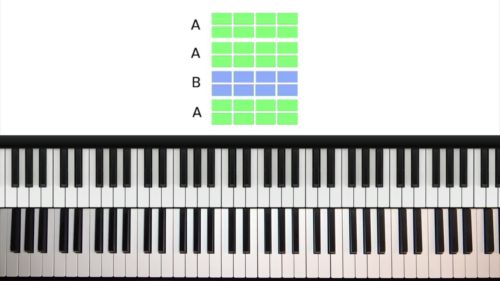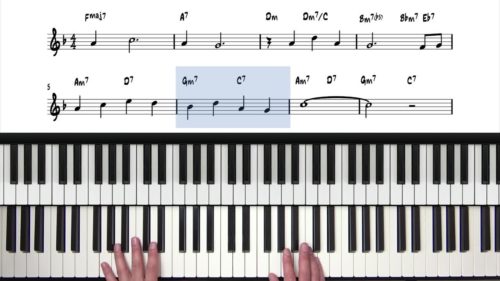"Jingle Bells" – 1625 Improvisation
Welcome to our improvisation module on the tune "Jingle Bells". In the previous lessons we have reharmonised the tune by adding lots of passing chords, substitutions, and reharmonisations.
In this module we will do the opposite and simplify the form so that we are dealing mainly with the diatonic 7th chords of G Major and the common diatonic progressions including the 1625 and the 3625 progressions.
Major Blues Scale Improvisation
We’re going to explore improvisation from a blues standpoint by using the major blues scale and some useful blues licks and vocabulary built from this scale.
For this first lesson we will explore voicings and improv for the 1625 turnaround which is used to transition into the improvised solo. We start with some basic voicing drills:
- Simple R-3-7 voicing shapes
- Play the A-7 as a dominant chord (A7)
- Introduce chord extensions & alterations – G6 / E7#5 / A9 / D13b9
Next we voice these chords in our left hand and outline the quarter note pulse. This creates a strong foundation upon which we can add melodic embellishment and decoration.
Lesson Downloads
-
Jingle Bells 1625 Voicings File Type: pdf
-
1625 Improv Drills File Type: pdf
Practice Tips
-
This progression is in G Major so let’s use of the G Major blues scale to derive our melodic material.
-
Learn the New Orleans hand position for improvisation which is 5th in octaves which allows us to access the blues notes with great efficiency
- Practice these different variations that I have shown you an in the next lesson we will apply concepts and principles to the A Section of Jingle Bells to create soulful bluesy improvisation.







